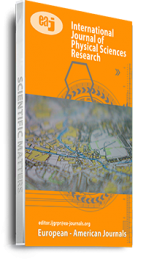Indoor Environment Quality (IEQ) is a very important aspects of housing as it provides safety, physiological and social comfort for the occupants. The principal qualities of indoor environment established in literature are thermal comfort, ventilation, daylight and acoustic. However, there are other factors which have received very little attention in literature that may influence the quality of indoor environment. One of these factors is the building characteristics based on forms and types. This study therefore examined house forms and types as a factor in indoor comfort studies in selected cities in Oyo state, Nigeria.The study employed both observation and objective approaches to obtain ordinal and numeric data from 579 (2.5%) of 23,000 houses in the three selected cities using systematic random sampling. The ordinal data were gotten through observation schedule which were conducted to assess the physical, spatial and locational characteristics of residential buildings. This assisted in classifying the residential buildings into types and forms. The numeric data were gotten using three technical equipment of Kestrel 4500 Pocket Weather and Environmental Meter, Noise Dosimeter and Lux Meter to physically measure indoor climatic elements, noise level and illumination level respectively. The values from the technical equipment were subjected to the IEQ Calculator (Apartment) Software, for rating the indoor environmental quality of the studied houses. The preponderant residential building types were Brazilian rooming houses (58.7%), flats (32.8%), compound impluvium house (4.8%) and duplex(3.6%). These residential building types were formed in to buildings with deep interior (2.2%), compact buildings (18.2%), compact with enclosing courtyard buildings (13.6%) and linear buildings (65.9%). Results from the IEQ performance rating indicated that majority of the houses were worst (1 star) in IEQ performance scale. The house form with the best IEQ performance was the linear form (4 star) and the worst IEQ performance was the broad deep interior spaces (1 star). The study recommended that there is need to give more attention to indoor environmental quality especially at the conceptual stage of any residential building designs.
Keywords: IEQ performance, Indoor Environmental Quality (IEQ), building characteristics, house forms, house types

